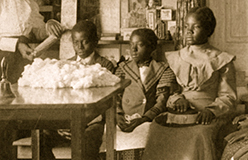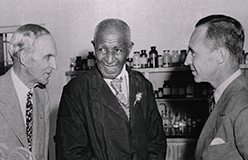Carver innovated throughout his life. His research helped redevelop the economy of the South.
He created hundreds of useful products from peanuts, sweet potatoes, and other plants, and he shared his knowledge and skills when and where they were needed. Industrialists and institutions sought his advice and honored him for his efforts.



